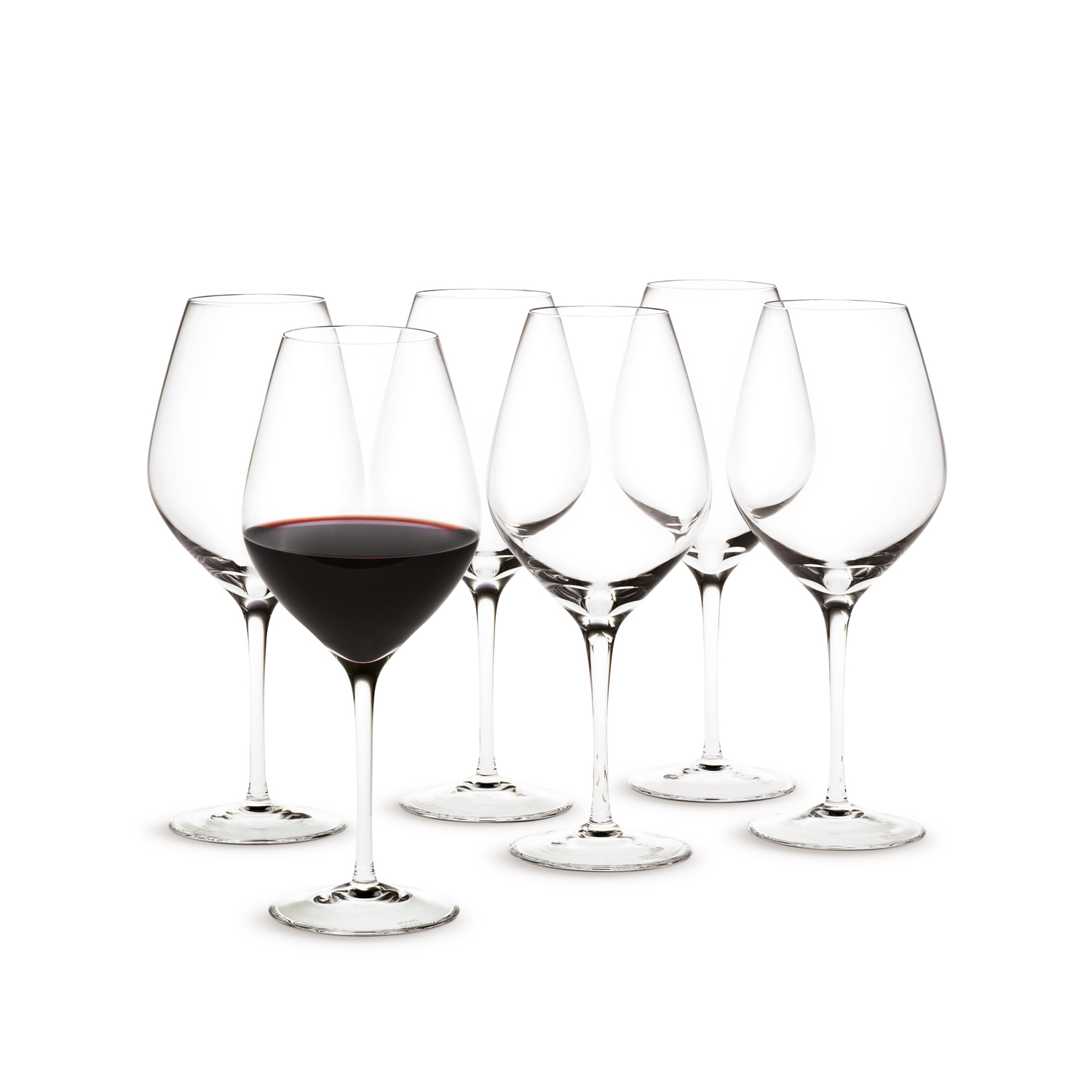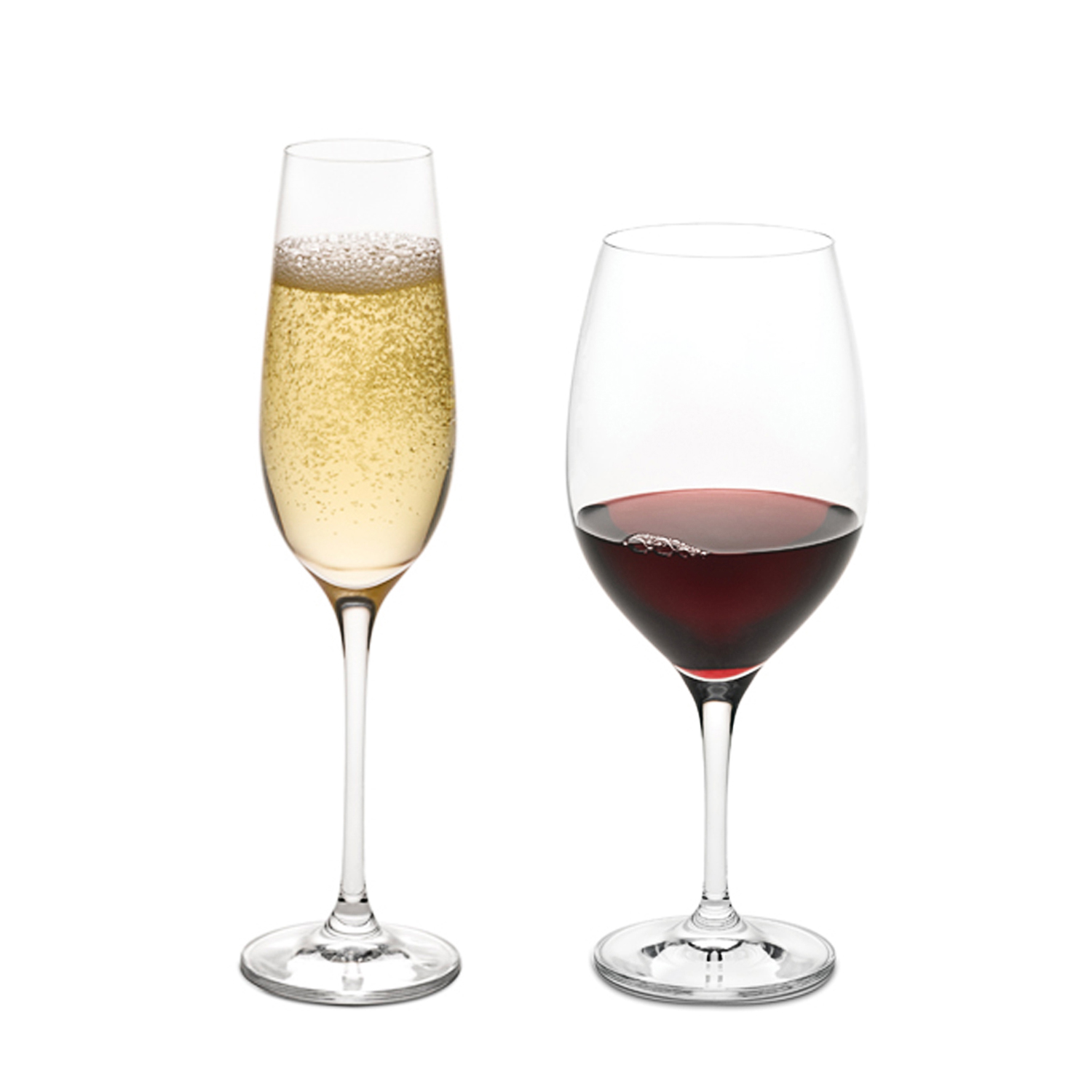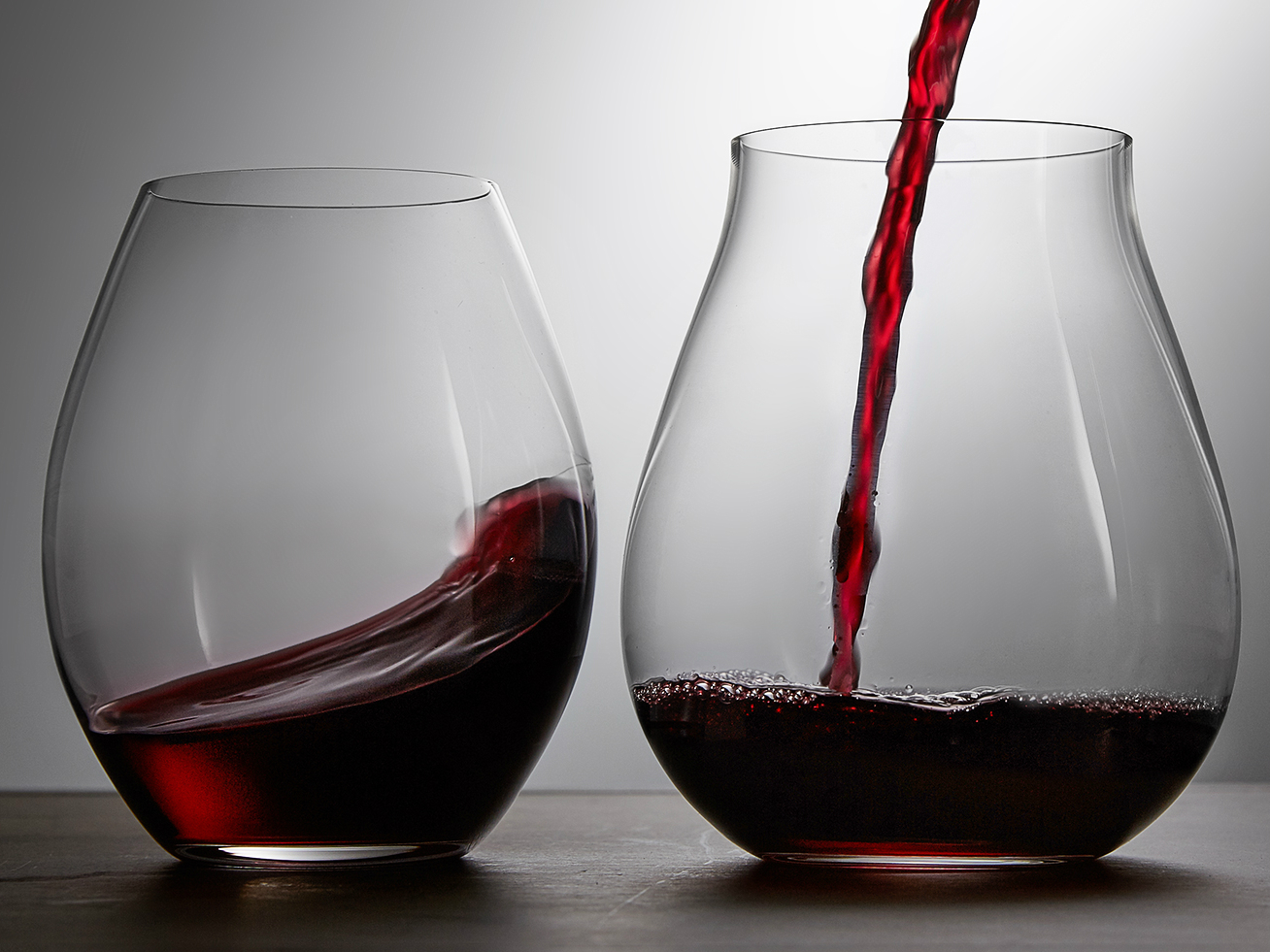At this point in our lives, knowing the difference between a pint glass and a champagne coupe is hardly the mark of sophistication. The three components that comprise the architecture of a wine glass (the base, the stem, and the bowl) are easy enough to remember, and you don’t need to be a trained sommelier to know what wine goes in what glass (we have the internet to tell us these things). If we’re being honest, it’s the science behind the imbibing of wine that has always piqued our interest. Does wine glass shape actually matter? Are there any real findings to back up these claims, or is it just a legend stemware makers push to move more product? Does the shape of the vessel have a measureable influence on our enjoyment of wine? We were pleased learn that the answer, actually, is yes.
Scientists at Tokyo Medical and Dental University recently conducted an experiment using an infrared camera to measure ethanol vapor from wine as it wafts out of the top of a wine glass. The presence of ethanol enhances the flavor and finish of the wine, and its presence was easy to track. A special cocktail of horseradish peroxide, luminol (yep, the same chemical used to detect blood at crime scenes) and a slew of other agents were blended together to detect the ethanol vapors. A side-by-side comparison was done with the same amount of wine in a regular highball glass. The differences in the paths the vapor took between the two glasses was remarkable, with clear distinctions in the speed as well as the shape of vapor that emerged.
“Wine glass shape has a very sophisticated, functional design for tasting and enjoying wine,” said Kohji Mitsubayashi, one of the lead scientists on the project. His team tested martini glasses as well as stemware with varying bowl shapes and rim diameters. The video itself is fascinating, as it actually paints a digital map of the bouquet as it forms in the bowl of the wine glass itself. The pleasantly-shaped donut cloud that slowly rises above the rim form a delicious little vaporous pillow for your nose to rest in. And why shouldn’t it? Being finicky about wine glass design isn’t about being snooty. In fact, it’s the melding of two of our favorite things: art and science.

Real quick, let’s talk fluid dynamics. Just as oenophiles know the benefits of gently swirling a red around in the glass before taking the first sip (it mixes oxygen into the liquid, which enhances flavor), the architecture of the rim of the glass is designed to optimize the delivery of the wine itself. The size of the bowl and diameter of the rim affects how quickly the wine enters your mouth, where it hits your tongue, and manages the way your nose receives the aromas. When timed just right, this motion can greatly enhance one’s experience and enjoyment of the wine. Stemware with wider bowls best compliment full-bodied reds like pinot noirs and burgundys, which allow more oxygen to mingle with the liquid, bringing out its aroma. And the thinner the crystal on the lip, the better. Sure, it’s more delicate, but it directs the wine straight to your tongue in a seamless, satisfying fashion.
Now, let’s take a look at a highly recognizable vessel we’re all familiar with: the tall and narrow champagne flute. The design of this notably slender glass isn’t incidental. Its long shape exemplifies those oh-so-famous tiny bubbles by reducing the surface area at the top of the bowl and funneling the aroma of the beverage straight to your nostrils. The tighter, smaller surface area at the top of the bowl means a smaller space for the bubbles to escape. These intentionally tight quarters allow the bubbly to maintain its, well, bubble, and this prolonged state of carbonation allows the champagne to be enjoyed the way it was meant to. Just make sure you fill it only about one third of the way full, as even the most effervescent of beverages need some breathing room.
Stemware architecture also impacts the wine’s temperature, which can hugely affect bouquet, texture, and flavor. In the Tokyo study mentioned above, scientists found that the temperature of the red wine that they utilized (55 degrees fahrenheit) was optimal for seeing the differences in pixel intensity, a reflection of the concentration of ethanol in the vapor. All the more reason to grasp your wine glass by the stem; it exists to keep the warmth from your hands from affecting the beverage’s temperature. Another study published in the Journal of Wine Research found that, regardless of wine type, “the total intensity of aroma was highly correlated with the ratio of the glasses cup diameter to the diameter of its opening.” Not sure about you, but this reminds us of the golden ratio, that classic melding of symmetry and proportion found in everything from architecture theory to Renaissance paintings, its purpose being to create an optimal setting for visual harmony. The architecture of stemware exists to be pleasing to all the senses, creating the best conditions for wine to be enjoyed.

Remember though, this is science, so don’t expect miracles. An expertly-made wine glass isn’t going to turn a cheap bottle of red from 7-11 into a premium Willamette Valley Pinot Noir. Well-crafted stemware isn’t going to tell lies. Rather, it will show you the simple truth, bringing out the flavor, minerality, and allowing the aromatic potential to shine. But get ready for a possible warts-and-all experience. As sommelier and wine consultant Alexandre Morin puts it, a top-tier wine glass reveals characteristics you may not expect. “You get everything,” he says. “All the little secrets.”
So does this mean you should throw out all those random glasses that have amassed in your kitchen cupboards over the years? Not necessarily. Or at least, not yet. Although there are now upwards of eighteen different stemware options on the market today to accommodate the even longer list of varietals, there’s no way for us to know what your priorities are. If you’re in need of a good starting point, consider a simple set of stemware for whites, another for reds, and two champagne flutes. Sure, maybe champagne isn’t consumed every day of your life, but when it is, it’s for good reason. Imagine your girlfriend coming home with the news that she got that big promotion. Or your friends stopping by with something surprising and happy to share. You’ll only be adding to that sense of spontaneous excitement when you pull down those flutes from the shelf like the cultured, prepared host you always knew you were. And like those tiny champagne bubbles, this is also why stemware is uncolored and crystal clear - in addition to taste, it’s a type of enjoyment that’s meant to be seen.

